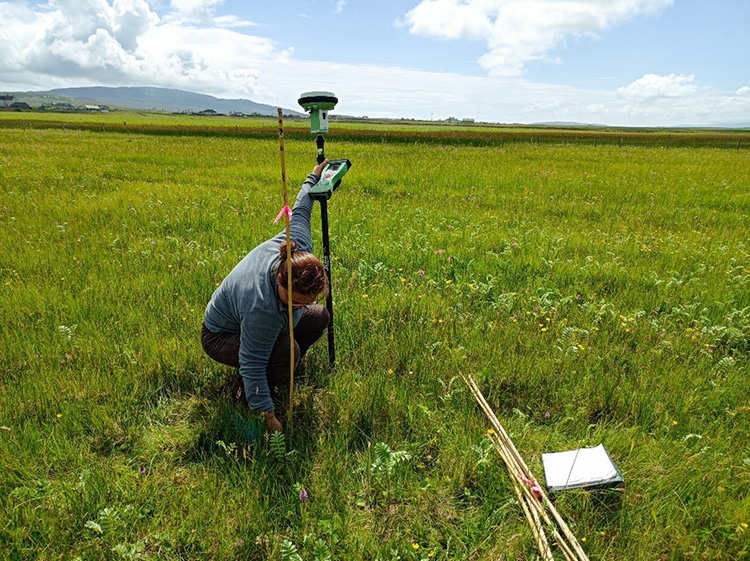This summer a small team of FMP staff set off to the Outer Hebrides (with a splinter team of one dispatched to Shetland) to revisit the astonishingly rich grasslands landward of the machair.
We were first made aware of these grasslands by Scottish Natural Heritage (now Nature Scot) following our review of the Calthion in England and Wales, which drew on decades of research to define several new floodplain meadow plant communities. When FMP were subsequently invited to the Outer Hebrides in 2018, it became clear that there was potentially as much species-rich wet grassland on the islands as in the whole of the rest of the UK combined, including some previously undefined types.
Having secured funding from the Halpin Trust we have been studying their composition, soil-hydrology, and management and worked with colleagues in Scotland and Ireland to compare them with other wet-grassland types present in the UK. This work has confirmed five new vegetation communities which are distinct from those in England, Wales, and Ireland. You can find out more about them in the December edition of British Wildlife, available here for £0.99 for non-subscribers and keep an eye out for a more detailed journal paper coming soon.
This year we returned to collect vegetation, soil, and hydrology data from our three instrumented sites on South Uist and, in partnership with the University of Edinburgh, to interview crofters about their management practices and challenges. This long-term dataset will help us to understand the soil-water regimes in more detail and begin to monitor change.
We hope to return to the islands in 2025, and that our continuing research into these beautiful grasslands will contribute to the recognition of their high conservation value and help to protect them against the threats of land abandonment, changes in subsidy regimes and the impacts of climate change.
 Retrieving precious hydrological data from one of the dipwell divers
Retrieving precious hydrological data from one of the dipwell divers
 Relocating fixed quadrats with a super accurate differential GPS and high-tech bamboo marking devices.
Relocating fixed quadrats with a super accurate differential GPS and high-tech bamboo marking devices.
 Wild botanists in their natural habitat
Wild botanists in their natural habitat
 Ragged robin, one of the most abundant species.
Ragged robin, one of the most abundant species.